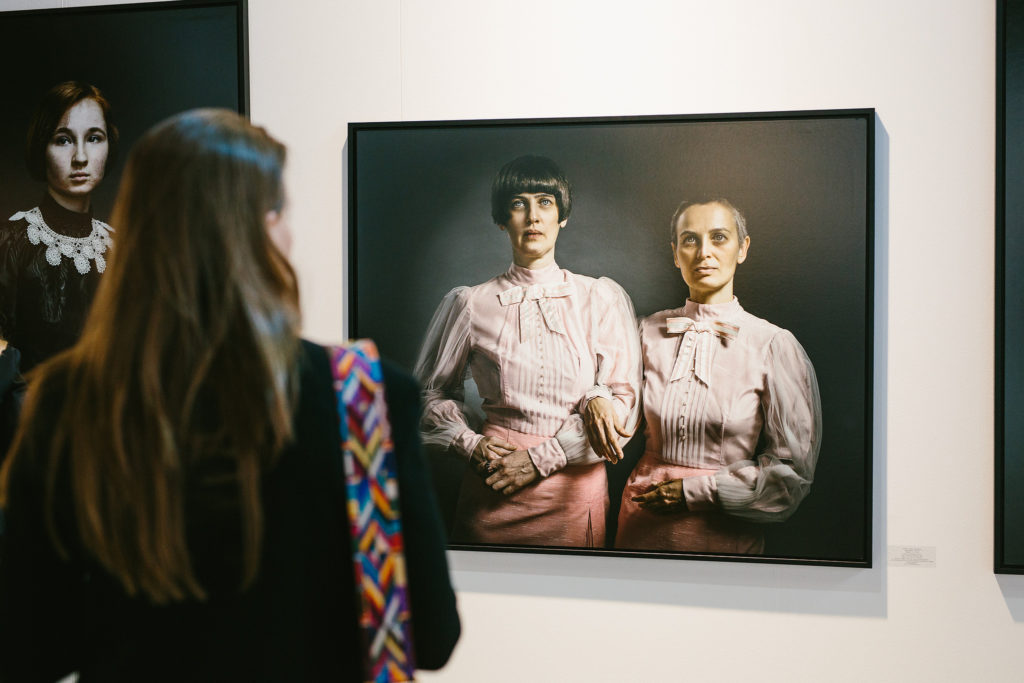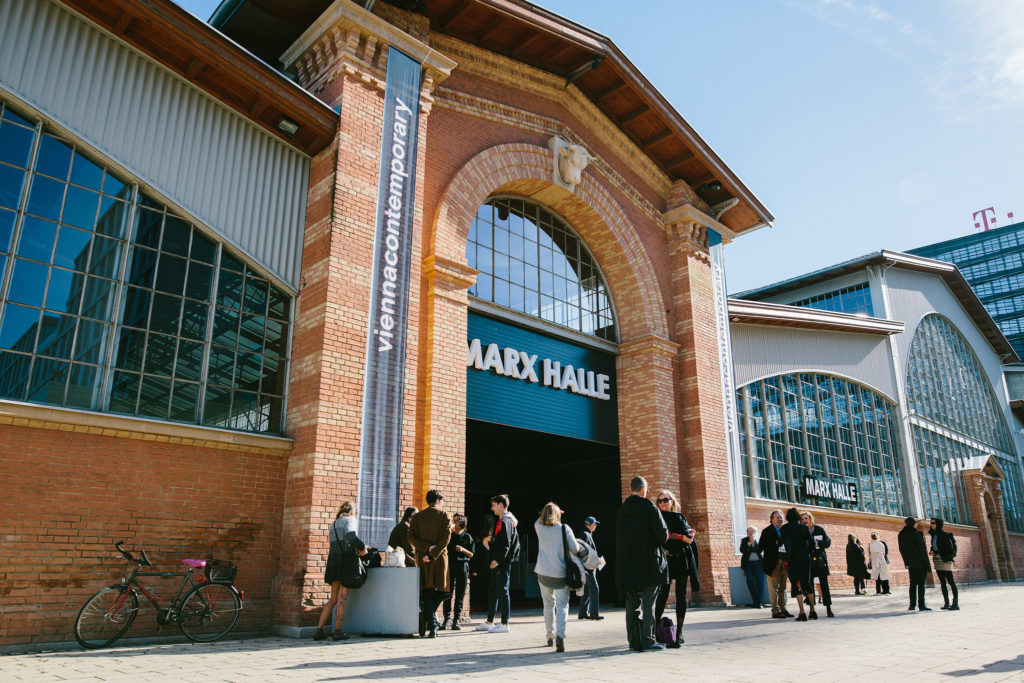Art Fairs
Vienna Provides a Welcome Boost to Europe’s Mid-Sized Galleries
Vienna Contemporary plays to its strength by introducing Central and Eastern European galleries to mid-market collectors.

Vienna Contemporary plays to its strength by introducing Central and Eastern European galleries to mid-market collectors.

Anna Furman

Austria’s leading fair, viennacontemporary, took place alongside the bigger and buzzier Berlin Art Week and just ahead of Frieze week in London. But the fair has found its niche, enabling Central and Eastern Europe’s smaller and mid-sized galleries gain a foothold in a contemporary art market where mega galleries seem to get richer while everyone else’s profit margins shrink at other fairs. The fourth edition of the fair, which closed on Sunday, had a special focus on Armenia, which played to the fair’s strength as the place where galleries and artists from emerging markets can find a wider audience.
Featuring 118 galleries from 27 countries, 34 of which come from Eastern Europe, works at the fair celebrated regional identities, and highlighted recent political upheavals. Championing inclusive and diverse international art felt more urgent than ever in a country where right-wing populist politicians are gaining support and isolationism is on the rise.
Over espressos collectors, gallerists, and curators from mostly Central and Eastern European countries converged in the VIP lounge to network and talk shop. A boutique fair compared to many, it attracted more than 30,000 visitors this year. The fair, which announced “strong” sales all in the €20,000-€50,000 ($23,000-$57,0000) price bracket, proved a fertile grounds for mid-sized galleries to connect with new buyers, curators, and each other.
The fair’s big announcement was that it had secured the Marx Halle, a former cattle market in Vienna’s 3rd district, as its venue for the next decade. It is also the last edition for the fair’s director Christina Steinbrecher-Pfandt, who tells us that she heading to the US (although not what she intends to do next). She spoke to artnet News about the fair’s direction under her leadership while others reflected on Vienna’s evolution as a contemporary arts hub.

Viennacontemorary will stay at the the Marx Halle for the next ten years. Photo courtesy viennacontemporary.
“We are not trying to copy any other fair by just appropriating what they do,” Steinbrecher-Pfandt said. “We go for a particular country focus and we’re proud of it.” Her clear-eyed focus lies in cultivating relationships between members of emerging art scenes within Europe—though the fair did include several galleries based in Asia as well. “We feel no shame that there’s no New York gallery [here], because it doesn’t make sense. The owner of a New York gallery is welcome to come, and shop here, and learn about what we offer.”
“The market has changed so much that blue-chip art is being sold over the phone, the mid-market is really having a tough time,” she said. “For any gallerist in the mid-market, it’s a tough call to go to another continent—either from Europe to the US or the US to Europe—because it costs a lot of money.” Many of the galleries at viennacontemporary, according to Steinbrecher-Pfandt, are run entirely by one or two people.
“[Vienna] has academia, so we have the institutions that teach, we have the museums, so the institutions that potentially show, and we have the galleries that show and they’re growing. So, infrastructure-wise, everything’s here,” explained Steinbrecher-Pfandt. “I’m very careful and cautious, but I can say, that in last two years, 10 galleries have opened. And that’s really nice for a city of 1.8 million.”
Many Austrian galleries, which made up the majority of dealers at viennacontemporary, are loyal to the fair in the capital city although they have an incentive to show abroad. If they show at least 50% Austrian artists, they can apply for government funding to subsidize their booth’s cost at international art fairs abroad.
In Austria, collectors tend to be business owners, in the pharmaceutical industry, or have made their money gambling. That’s about as diverse as it gets—and their tastes reflect that.
“Either [collectors] have companies or are doctors or lawyers,” said Nathalie Halgand, who opened her eponymous gallery about two years ago in Vienna’s trendy 6th district. “We don’t have a lot of super collectors like in the States, but we do have a strong middle class.” She represents a wide swathe of artists that are US, Japanese, Italian, Greek, Austrian, and German.
According to Laura Windhager, director of Gianni Manhattan gallery, Vienna’s 3rd district is white-hot. “We decided to move away from where the galleries normally are, which is the first district and the fourth. The 3rd district is super central, near lots of artist studios and I found this great space with a weird, edgy entrance.”
She opened her gallery, which is named after her family’s cat, in early 2017 to represent emerging artists. “What threads together all the artists I work with is a shared concern with language, the world we live in, and politics, especially gender politics,” she explains. “It’s important for a young gallery, for me at least, to be outwardly political. It’s not a time to shy away from politics.” In Windhager’s booth, the artist Marina Faust nailed a single black stiletto to the wall; the straps flail out on both sides like injured insect legs. The gesture is simple but effective—charged as it is with implications about beauty standards and the struggle for true gender equality.

Armenia Focus at vienna contemporary 2018. Photo by Niko Havranek.
Viennacontemporary dedicated a special section to Armenia this year, featuring work by seven artists. In previous editions the same section has been dedicated to a theme or specific media. “I’m very happy we’re presenting Armenia here and now because it’s a very important year for us,” said Anush Zeynalyan, director of Armenia Art Foundation.
“The revolution in May brought all the world’s attention to Armenia, and that’s of course a unique chance for the artist to speak of their practices,” said Sona Stepanyan, the foundation’s curator. “We try not to participate in the fairs because the foundation’s mission is to provide money for artists to work,” she continued. “But since, historically, we have this amazing relationship with Vienna—in 2003 there was a huge exhibition of Armenian art in Vienna at Kunsthalle—and I’ve worked with Christina before, we’re here.”
Armenian artists based in the country and from its diaspora were exhibited together—conveying a broad sense of Armenian identity. In artist Rebecca Topakian’s mixed-media installation, she juxtaposes family photographs with a series of natural glass and broken tuf (a common building material) that she’s printed photographs onto. After the genocide, her grandfather fled Armenia; she grew up in France and visited Armenia for the first time only two years ago. Before, she conceived of Armenia as “something of a fairytale, very fictional, romantic, mythological.” As she distilled it, “This project is meant to fill the gaps of history with fictional narratives.”
In state elections earlier this year, Austria’s Freedom Party (FPÖ), a right-wing group that appeals to Nazi apologists, entered the government and established a coalition with the dominant conservative party. “I’m sure that with the new government, [arts funding] will be cut,” Windhager said. “Maybe not now and maybe it will be slowly, but I’m afraid that with a lot of right-wing, populist governments, the arts and education are the first places where they start cutting.”
“There’s no love for contemporary art among the right-wing party. The art that they support is not critical,” Nathalie Hagland said. It seems that now is as good a time as any to invest in emerging and mid-market galleries showing bold, critical work.